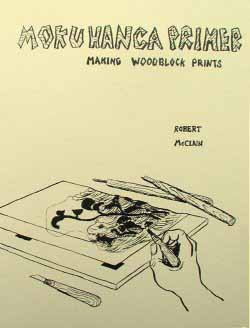

- MOKU HANGA PRINTMAKING EARLY 1900S ARCHIVE
- MOKU HANGA PRINTMAKING EARLY 1900S REGISTRATION
- MOKU HANGA PRINTMAKING EARLY 1900S SERIES
Essential to this process are appropriate materials, including imported Japanese plywood (shina), waterbased pigments, washi and special brushes to apply the colour. While reading April Vollmer's new book about mokuhanga, I noticed that when talking about an artist she would often mention that artist's lineage: where and with whom they studied. Many printing variations are achievable with slight adjustments of water, use or not of rice paste, and local applications of pigment. Printing using a baren on Japanese washi papers with gouache pigments give mokuhanga it's pronounced characteristics: the colours are absorbed into the paper as a graphic stain thanks to the long fibres characteristice of washi. The process was only adopted much later for secular books, a Chinese-Japanese dictionary of 1590 is the earliest known example.
MOKU HANGA PRINTMAKING EARLY 1900S REGISTRATION
A waterbased printmaking method, mokuhanga involves planning a graphic image, transferring the outlines to one or more woodblocks, carving and printing it.Īn effective registration method using carved notches in the wood called "kento", ensures that the separated colours fall exactly where you want them. Wood, water, paper, pigment, paste, and simple carving and rubbing implements are all that is needed to make a print. Today this technique is being explored by many contemporary printmakers. Japanese woodblock printmaking, moku (wood) hanga (print), is distinguished from other printmaking techniques by the simplicity of material involved in its creation. In Japan, this movement was called ssaku-hanga (, creative prints), as opposed.

An example of an early Japanese print is shown Right. In the West, many artists used the easier technique of linocut instead. This traditional Japanese printing method emerged in the 17th century. For the exhibition, the museum cooperates with guest curator Chris Uhlenbeck.Mokuhanga means 'woodblock print' in Japanese. Ink is prepared from organic and inorganic substances. It takes up the history of traditional printmaking in Japan where the 2016 exhibition ended. In Moku-Hanga, water-based ink is applied to the block using a brush. This exhibition is a logical follow-up to the major Ukiyo-e exhibition held at the Museum in 2016-2017. These were distributed to temples around the country as thanks for the suppression of the Emi Rebellion of 764.

"This exhibition once again proves the versatility of the Art & History Museum's collection and the power of heritage in bringing together stories, communities and ideas across generations and continents." - Thomas Dermine, State Secretary for Economic Recovery and Strategic Investments, in charge of Science Policy. History Early, to 13th century In 764 the Empress Kken commissioned one million small wooden pagodas, each containing a small woodblock scroll printed with a Buddhist text ( Hyakumant Darani ). While retaining classic themes such as landscapes, beautiful women (bijin), kabuki actors and flowers-and-birds, Shin hanga prints also reflect a modernizing Japan and seduce with a new aesthetic and an extremely high production quality.Īrtists: Kawase Hasui, Itō Shinsui, Ohara Koson, Kasamatsu Shirō, Komura Settai, …
MOKU HANGA PRINTMAKING EARLY 1900S ARCHIVE
The images on display are from our archive of sold Japanese prints. Usually it takes him 3 months to create a new design. Ryusei Okamoto works exclusively in this old Japanese tradition, and he performs all steps himself - design, carving and printing.
MOKU HANGA PRINTMAKING EARLY 1900S SERIES
He gathered around him artists whose drawings were printed using traditional woodblock printing techniques. The series First Love is an example for moku hanga on a level of excellence and perfection. The publisher Watanabe Shōzaburō (1885-1962), noting the decline in xylographic production due to competition from new imported techniques such as photography and lithography, was the movement's greatest promoter. The Shin hanga (literally « new prints ») art movement was a revival of traditional printmaking (ukiyo-e) in the early 20th century. Next to these works, the visitors find a selection of Shin hanga prints from the rich collection of the Art & History Museum. The " Shin hanga - The new prints of Japan 1900-1960" exhibition ( – ) features no less than 220 Japanese prints from two private collections in the Netherlands, as well as sketches, studies and prints from the collection of the grandson of the publisher Watanabe.


 0 kommentar(er)
0 kommentar(er)
